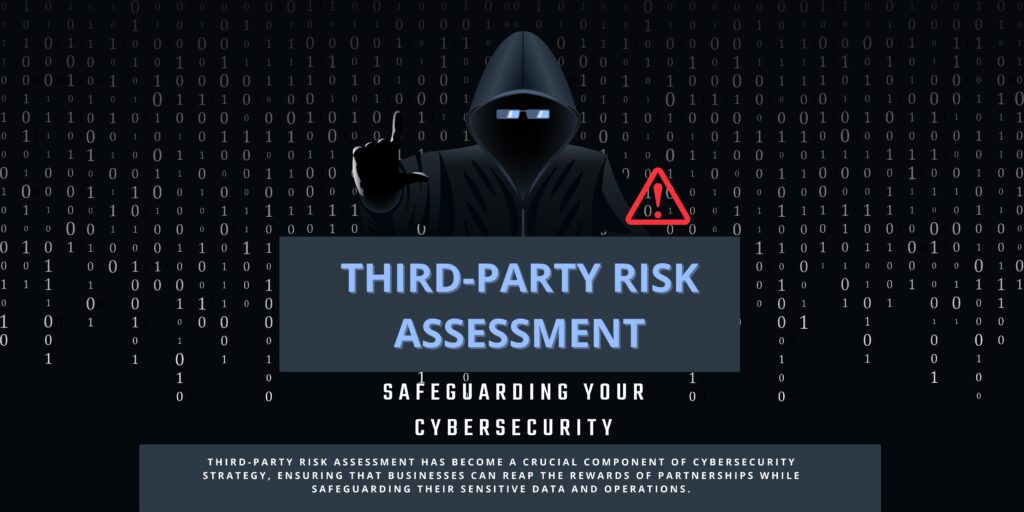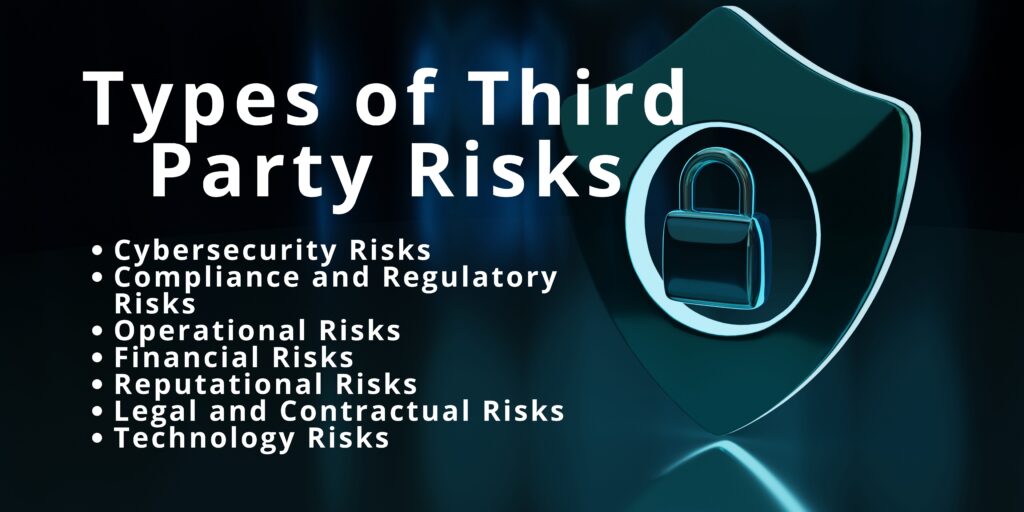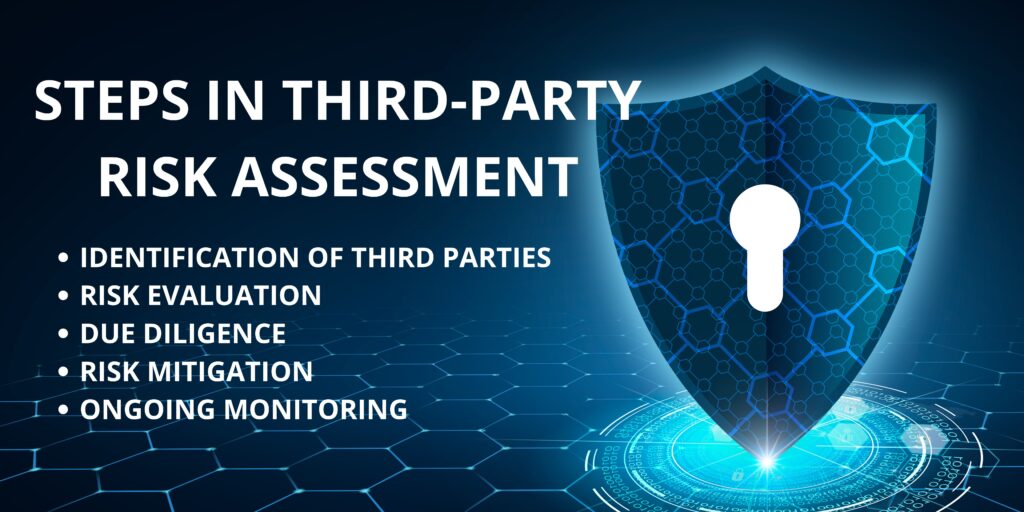Third-Party Risk Assessment : A Comprehensive Guide For 2024

In today’s interconnected digital landscape, businesses rely heavily on third-party vendors and partners to streamline operations, reduce costs, and expand their reach. While these collaborations offer numerous benefits, they also introduce a significant element of risk to an organization’s cybersecurity. Third-party risk assessment has become a crucial component of cybersecurity strategy, ensuring that businesses can reap the rewards of partnerships while safeguarding their sensitive data and operations.
Table of Contents
Introduction
Third-party risk assessment is a vital and increasingly complex aspect of modern cybersecurity and risk management. It revolves around the process of identifying, evaluating, and mitigating potential risks and vulnerabilities posed by external entities that have access to an organization’s systems, data, or resources. This assessment is essential for safeguarding an organization’s assets, maintaining regulatory compliance, and preserving its reputation in an era marked by data breaches, compliance regulations, and heightened security concerns.
Understanding Third-Party Risk
In this article, third-party risk refers to the potential harm or damage an organization may face due to actions, negligence, or vulnerabilities within its third-party network. These risks can manifest in various forms, including data breaches, compliance violations, operational disruptions, reputational damage, and legal consequences. In the context of cybersecurity, third-party risk is particularly concerning because it can lead to unauthorized access, data leaks, and breaches that have far-reaching consequences.
What is Third Party Risk Management?
TPRM is a comprehensive process that organizations undertake to identify, assess, monitor, and mitigate the potential risks associated with their relationships with third-party vendors, suppliers, contractors, service providers, and other external entities. Third-party risk assessment is the process of evaluating and managing the potential risks and vulnerabilities associated with external parties, such as vendors, suppliers, and partners, that an organization relies on for various services or collaborations.
Types of Third-Party Risks
The third-party risks can be categorized into several key types:

1. Cybersecurity Risks:
- Data Breaches: Third-party vendors may experience security breaches, leading to the exposure or theft of sensitive data shared with them.
- Weak Security Practices: Inadequate cybersecurity measures by third parties can create vulnerabilities that cybercriminals may exploit.
2. Compliance and Regulatory Risks:
- Non-Compliance: Third parties may fail to adhere to industry-specific regulations or data protection laws, potentially resulting in legal and regulatory consequences for the organization.
- Privacy Violations: Mishandling of personal or sensitive data by third parties can lead to privacy breaches and regulatory fines.
3. Operational Risks:
- Service Disruptions: Third-party service providers experiencing outages or disruptions can disrupt an organization’s operations or customer service.
- Supplier Dependency: Overreliance on a single third-party supplier can pose a risk if that supplier encounters issues or fails to deliver as expected.
4. Financial Risks:
- Financial Instability: Financial difficulties or bankruptcy of a third-party vendor can impact the organization’s supply chain or service continuity.
- Contractual Risks: Disputes or contractual breaches by third parties may lead to financial losses or legal disputes.
5. Reputational Risks:
- Negative Publicity: Security incidents or unethical behavior by third parties can harm the organization’s reputation and erode trust with customers and stakeholders.
- Loss of Trust: Associations with third-party controversies or breaches can lead to a loss of trust in the organization.
6. Legal and Contractual Risks:
- Contractual Breaches: Third parties failing to meet contractual obligations can result in legal disputes and financial liabilities.
- Inadequate Contracts: Poorly structured contracts may leave the organization with limited legal recourse in case of third-party issues.
7. Technology Risks:
- Outdated Technology: Third-party systems or software may become outdated or unsupported, posing security and compatibility risks.
- Integration Challenges: Difficulties integrating third-party technologies with the organization’s existing systems can disrupt operations.
You can also read – What is External Attack Surface Management?
Why Third-Party Risk Assessment Matters?
Third-party risk assessment matters significantly in the modern business landscape for several compelling reasons:
1. Data Security
One of the primary motivations for conducting third-party risk assessments is to safeguard the confidentiality, integrity, and availability of data. When organizations share data with third parties, the potential for data exposure or mishandling increases. A robust assessment process helps identify vulnerabilities and ensures that third parties maintain the same stringent security standards as the organization itself.
2. Regulatory Compliance
The regulatory landscape governing data protection and privacy has become increasingly stringent. Failure to ensure that third parties comply with these regulations can result in substantial fines and legal liabilities for organizations. Thorough risk assessment ensures third-party compliance, reducing the risk of legal repercussions.
3. Reputation Management
A security breach or incident involving a third party can severely damage an organization’s reputation. This loss of trust can lead to a decline in customer and stakeholder confidence, ultimately impacting business and revenue. By proactively assessing and mitigating third-party risks, businesses can demonstrate their commitment to cybersecurity and maintain the trust of their clients and partners.
4. Business Continuity
Third-party disruptions can disrupt an organization’s operations, leading to financial losses and productivity setbacks. Through comprehensive risk assessment, vulnerabilities in third-party systems and practices that could result in operational downtime can be identified and mitigated, ensuring business continuity.
Steps in Third-Party Risk Assessment
Here are the steps typically involved in a comprehensive third-party risk assessment:

1. Identification of Third Parties:
Start by identifying all third parties with whom your organization shares sensitive data or maintains significant collaborations. This includes suppliers, service providers, contractors, and cloud vendors.
2. Risk Evaluation:
Assess potential risks associated with each third party. Consider factors such as their cybersecurity measures, past security incidents, regulatory compliance, and overall security posture.
3. Due Diligence:
Conduct thorough due diligence on selected third parties, including background checks, financial stability, and reference checks. This step helps in gauging the reliability and trustworthiness of potential partners.
4. Risk Mitigation:
Collaborate with third parties to address identified vulnerabilities and establish clear security protocols. Implement risk mitigation strategies, such as security audits, monitoring, and incident response plans.
5. Ongoing Monitoring:
Third-party risk assessment is not a one-time activity. Continuously monitor the cybersecurity practices of your third-party partners to ensure they maintain the required security standards.
Conclusion
In a world where business success often hinges on strategic partnerships and collaborations, third-party risk assessment is paramount for maintaining robust cybersecurity. Neglecting these risks can result in data breaches, legal consequences, and reputational harm. By implementing a comprehensive risk assessment process, organizations can protect their data, reputation, and financial stability while reaping the benefits of strategic partnerships in the digital era.
You can also read – Top 10 Best Phishing Tools for Advanced Protection (2024)
FAQs
Why is third-party risk assessment important?
Third-party risk assessment is crucial to identify and mitigate potential threats that external entities may pose to an organization’s data security, compliance, operations, reputation, and overall business continuity.
What are the key components of a third-party risk assessment process?
Key components typically include identification of third parties, risk evaluation, due diligence, risk mitigation, ongoing monitoring, contractual agreements, incident response planning, regulatory compliance, and reputation management.
How can organizations identify third-party risks?
Organizations can identify third-party risks by categorizing their external relationships, conducting risk assessments, and evaluating factors such as cybersecurity practices, compliance with regulations, financial stability, and ethical considerations.
What are the consequences of neglecting third-party risks?
Neglecting third-party risks can result in data breaches, regulatory fines, operational disruptions, financial losses, damage to reputation, and legal liabilities.






